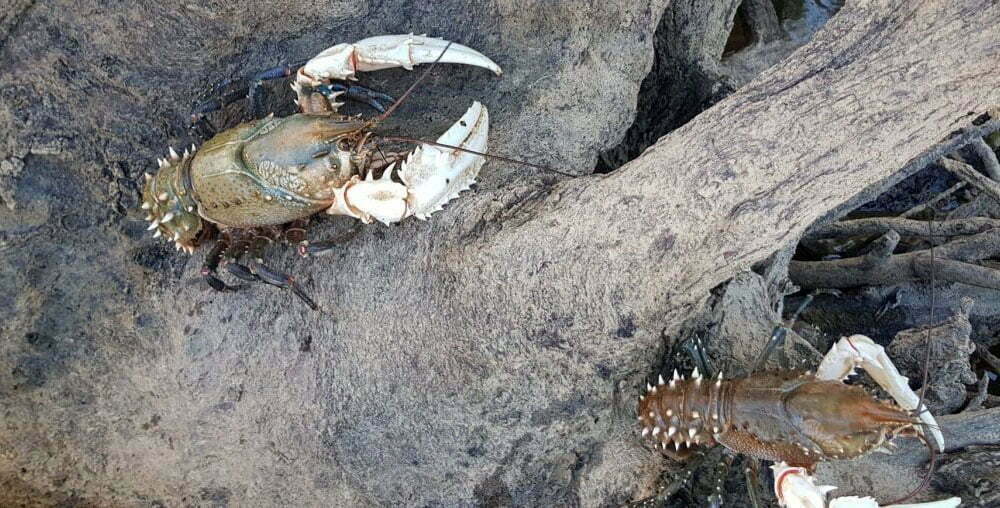ARRC NEWSLETTER – JUNE 2020 EDITION
Hi everyone,
A warm winter welcome to you – I have chosen the title ‘one size fits none’ for this newsletter as it links to several of our articles, whether they be about fish, flows, communications, or our reactions to Covid-19. We share a follow-up piece to our podcast episode with Paul Ryan focusing on ‘bouncing forward’, with six wide ranging conversations about how Covid-19 has impacted on the lives of a few of my friends.
We also celebrate three years working with our valued partner Water New South Wales through our Rivers of Carbon – Source Water Linkages project, and also share with you the new Flow-MER website we launched a few weeks ago.
Lastly, we have an inspirational talk about why we should live with our heads in the clouds.
Enjoy!
– Siwan and the ARRC team 😊
Cheetham’s Autumn tree planting. Photo credit: Ben Hanrahan
ON-GROUND PROJECTS
Rivers of Carbon: Source Water Linkages – three years on…
Three years ago when we commenced Rivers of Carbon – Source Water Linkages we were excited about the opportunities our partnership with Water NSW could bring. As we reach the end of the three years and reflect on all that has been achieved, we are proud that those opportunities have been acted upon. We have met all our targets, despite challenging drought, bushfire and Covid-19 conditions. This is in large part due to the great team of Ben Hanrahan, Lori Gould, Lucy Wenger, Mary Bonet and Pat Gudhka, who work alongside me to deliver this project. It is also very important to acknowledge the significant effort and commitment Stuart Naylor from Water NSW gives to Rivers of Carbon – Source Water Linkages. Stuart is a vital team member and a pleasure to work with. The successes of the program reflect well on the positive and constructive relationships we share as a team, and our shared purpose of supporting landowners to better manage their creeks, wetlands and streams
Achievements so far:
36 landholders involved
Working across 38 sites
51.7kms of riparian area fenced
201.3ha of riparian area protected
Planting of 19,030 plants
8 activities, 500+ people engaged
We’ve also created four practical resources as part of this project which you can access here.
COMMUNICATION
“One size fits none” for water threat communication
Written by Madelyn Pardon
One message is created and delivered to millions, even billions of people about an environmental issue and is expected to encourage behaviour change. One message is hoped to be fitting for all. In reality, however, it is unlikely that one message appeals in such a way that makes everyone change their behaviour. Why? Because we are all unique. Although we would like to think everyone acts in a unified way to save the environment, we know that the beliefs and/or actions of individuals are not the norm for some, or even most.
Even though it is well acknowledged that differences exist between people, when we try to communicate an issue to the general public, everyone is treated the same – by being exposed to one message. But just like the title says… “One size fits none” or at least very few. Madelyn Pardon’s research aimed to understand the differing perceptions of environmental threats to inform message construction, so that we can branch away from the previous “one size fits all” approach to environmental campaigns.
BRINGING BACK NATIVE FISH
Finterest Update
Our first story looks at the Murray Crayfish – once widespread and abundant throughout the Murray River system, this species has suffered dramatic declines in range and abundance since the 1950s. This story looks at findings from the last 20 years of research conducted to monitor the Murray Crayfish populations in the Murray River and its tributaries.
Our second story chases Tilapia – probably the worst invasive pest species to have ever been turned loose in this country. Their tolerance to a wide range of environmental conditions make them a high concern with the species now established in 25 out of 76 catchments in Queensland, and Rob Cheetham discusses how we can take community action to help stop the spread.
CONVERSATIONS
Bouncing Forward:
Six perspectives on the COVID experience
In our most recent podcast episode of ‘Take me to the river’, we spoke with Paul Ryan about the idea of ‘bouncing forward’ – if you missed this, you can have a listen to the episode here.
As a follow up, we reached out to our network and asked a few people about their experience of COVID, as well as any learnings they will ‘bounce forward’ with. Here are six diverse perspectives that span university, government and not-for-profit spheres – we are curious to know how many you resonate with, and whether it encourages you to think about what COVID has meant for you. Our conversations are with Kate MacMaster (Peter Cullen Trust), Stuart Naylor (Water NSW), Lori Gould (Rivers of Carbon), Adam Shipp (Yurbay), Suzy Nethercott-Watson (Two Green Threads) and Ian Rutherfurd (University of Melbourne).
WATER FOR THE ENVIRONMENT
New Flow-MER website launched for CEWO’s on-ground Monitoring, Evaluation and Research program
What an incredible project to be a part of – The Flow-MER Program is the Commonwealth Environmental Water Office’s on-ground Monitoring, Evaluation and Research program, and Pat and I have been working hard to create this beautiful new digital home for the program. Flow-MER facilitates partnerships between scientists, water managers and communities across the Murray-Darling Basin to help us understand how fish, birds, vegetation and river connectivity are responding to Commonwealth environmental water. The program draws together, and builds on the great work undertaken during the Long-Term Intervention Monitoring (LTIM) and Environmental Water Knowledge and Research (EWKR) Projects.
We encourage you to explore the website and share it amongst your networks.
INSPIRATION
Lastly, my friend Ange has once again sent me through another great TED talk – we leave you with this inspiring video by Gavin Pretor-Pinney, founder of the Cloud Appreciation Society.
You don’t need to plan an exotic trip to find creative inspiration. Just look up, says Gavin. As he shares charming photos of nature’s finest aerial architecture, he calls for us all to take a step off the digital treadmill, lie back and admire the beauty in the sky above.
PLEASE CONSIDER MAKING A DONATION GIFT TO KEEP US DOING WHAT WE DO BEST
Have you enjoyed reading our newsletter and watching the videos we have provided? If so, you might like to give us a donation that reflects what you feel this newsletter means to you. We rely on donations to keep sharing knowledge and staying in touch. As a registered charity recognised under the ACNC, we report to them every year about the contributions people have made in the form of donations. When you donate we can demonstrate that we are valued, and that people are willing to support to us so we can continue to build future resources for you and others alike.
Or send your donation via Direct Transfer:
Westpac Bank
ARRC Public Fund
BSB: 032-730
Account: 198844
If using direct transfer please have as the reference your name & date of donation. I can send you a receipt if required, just email enquiries@arrc.com.au with the details of your donation. Thank you 🙂





